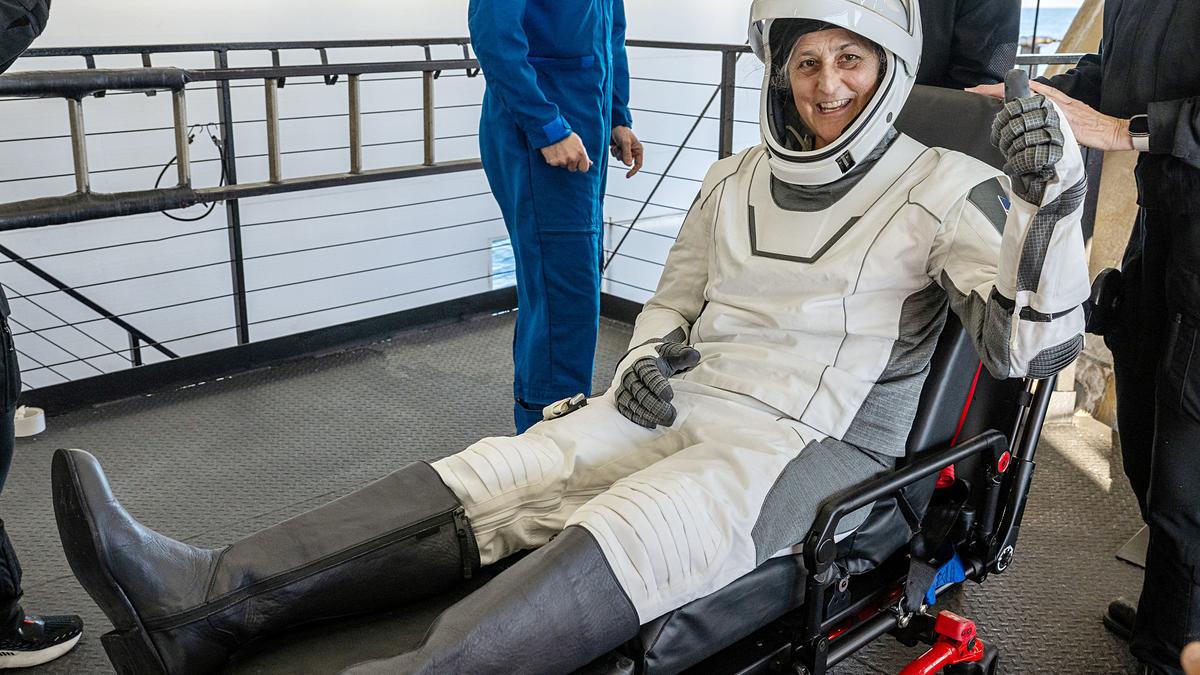Space, the ultimate frontier, has fascinated humankind for centuries. Yet, for decades, it remained an arena dominated by men. However, that is changing, and women have been steadily carving their rightful place in the cosmos. The return of veteran NASA astronaut Sunita Williams from a challenging 286-day extended stay aboard the International Space Station has once again highlighted the courage and intelligence of women in space exploration.
Ms. Williams has spent over 608 days in space across multiple missions, making her one of the most experienced astronauts in the world, second only to another NASA astronaut, Peggy Whitson, who, with 675 days, holds the record for the longest stay by a woman in space. Ms. Williams’s achievements are inspiring, given that decades ago, women were barred from space programmes. The first astronauts were all men chosen from military aviation, a domain basically dominated by men. Valentina Tereshkova of the then U.S.S.R became the first woman in space in 1963. Sally Ride became the first U.S. women to venture into space in 1983.
Today, space exploration is no longer a male-dominated domain, thanks to the trailblazing efforts of women such as Ms. Williams. The increasing representation of women in space agencies signals a shift in perception, demonstrating that the qualities required for space travel are not gender-exclusive.
Ms. Williams’s journey is not just about an astronaut returning home; it is a powerful testament to the perseverance of women who have broken barriers in a field that was once considered beyond their reach. Her mission reaffirms that gender is no limitation when it comes to science, technology, and exploration. As we celebrate her return, it is imperative to reflect on the evolving role of women in space programmes, compare the representation of women in NASA, the U.S. space agency, and the Indian Space Research Organisation, and contemplate the future of space exploration.
Brave astronauts
Over the years, NASA has built an impressive roster of woman astronauts, engineers, and scientists. Women such as Ms. Whitson and Christina Koch, who conducted the first all-woman spacewalk with Jessica Meir in 2019, have proved that women are not just participants in space missions but are also leaders. NASA’s Artemis programme, which aims to return humans to the moon and establish a sustainable presence, has explicitly emphasised gender diversity.
The Artemis team includes several women astronauts, with the goal of landing the first woman on the moon in the coming years. This represents a significant shift from the Apollo era, when all 12 astronauts who walked on the moon were men.
The U.S. has made deliberate efforts to include women in NASA leadership, resulting in women astronauts playing significant roles in space exploration over the years. On the other hand, India has faced structural barriers that have slowed progress. The challenges are not only institutional but also cultural — fewer women in STEM fields, traditional gender roles, and limited opportunities for women to pursue careers in aerospace have all played a part. While the ISRO is making strides in bridging this gap, more needs to be done to ensure equal opportunities for women in spaceflight.
NASA has a long history of women’s representation, and India’s space agency has made laudable progress in integrating women into its mission. The exceptional examples are the Chandrayaan-2 and Mangalyaan (Mars Orbiter Mission) projects launched in 2013, which had a significant number of women scientists, including Nandini Harinath and Ritu Karidhal, playing significant roles.
Human flight
While NASA has sent multiple women to space, India has yet to send its first man or woman astronaut on an indigenous mission. Kalpana Chawla, an Indian-born astronaut, made history by flying with NASA, but a woman astronaut trained by the ISRO is still awaited. The inclusion of women in the ISRO’s future missions will be vital in setting an example for aspiring young girls in India who dream of reaching the stars.
Prime Minister Narendra Modi announced the names of four astronauts for India’s first manned space flight mission, Gaganyaan, which is planned to launch this year. However, to much dismay, no women have been included in this inaugural mission.
More inclusive
The future of space exploration is set to be more inclusive than ever before. Private space companies such as SpaceX and Blue Origin are increasingly hiring woman astronauts.
The thrust for a Mars mission in the coming decades may very well see a woman stepping on the Red Planet.
Therefore, it is time for India to make history by selecting and training its first woman astronaut. Ms. Williams’s return from space is more than just a homecoming; it is a moment of reflection on how far women have come in space exploration and how much further they have yet to go.
The next giant leap for humankind will not be taken by men alone — it will be taken together, as equals, pushing the boundaries of what is possible.
mercyfamila@gmail.com
Published – April 06, 2025 04:16 am IST
